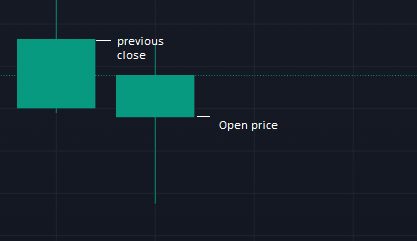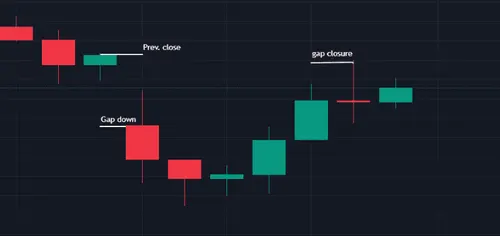Our partner, XM, lets you access a free demo account to apply your knowledge.
No hidden costs, no tricks.

Opening price is a concept in financial markets. In stock trading, the opening price is the price of an asset at the market's opening. In Forex, the opening price typically pertains to the initial price of a candle or bar on a currency pair chart. Let’s explain every aspect of the opening price to grasp its meaning below.
The opening price is important because it sometimes has the potential to indicate how the trading day will unfold. If the opening price opens below the previous closing price, it indicates downside pressure and bear momentum could follow. The opposite is true when the opening price is more than the previous close. This concept is crucial in financial trading, including stocks, cryptos, and all other markets. Traders watch opening prices closely and sometimes even develop strategies to use opening prices as an indicator of potential movement.
We will describe some of these strategies below.
The previous close is the closing price of the previous session or candle (or bar, depending on the market and chart type). What comes before the opening price is the previous price of an instrument. Let’s make it more clear.

So, the previous close is the closing price of a previous candle bar or session. Depending on the context and financial market. Since Forex markets are open 24/5, the previous closing price of the candle can be considered as the previous close. There is a fundamental difference between the two, as the previous close is always before the current opening prices.
As we have mentioned above, sometimes the open price is above or below the previous closing price. If there is a distance between the vertical distance of open and previous close prices, we call it a gap. When the open price is below the previous close, we have a gap in the bearish direction. This indicates strong bearish or downward pressure in the market, and traders can use it for an indication of future price trends. Opposite is true if the opening price is higher than the previous close price.
When gaps occur during the opening prices, it sometimes tends to close the gap by moving towards the previous close price. In this case, traders might enter a short-term position and capitalize on this movement. While gap closure happens quite often, it still is a risky strategy as it opposes the current pressure direction in the market.

It is risky because many times the trend just continues in the direction of the gap and traders must use stop loss to prevent excessive losses.
The opening price is always psychological, as many traders await what the market is going to do in the first hours of the trading session. At times the first momentum is maintained the whole trading session and prices follow the direction of the gap. Gaps are especially psychological as they show strong momentum and pressure. Since many traders tend to follow the dominant trend, gaps can quickly promote strong trends.
Often, it is best to check trading conditions when a new candle opens. This is true because trading robots are programmed to be efficient and only check markets when there is a new candle. Because of this, opening prices have tremendous importance for many traders who are using algorithms for trading.
As we can see, the opening price tends to have a tremendous impact on financial markets. Many traders are using opening prices to develop trading strategies or to catch a glimpse of what may be coming for the trading session. The concept is also widely used in algorithmic trading to develop more efficient trading robots. Gaps happen when the opening price tends to be significantly higher or lower than the previous close price. In this case, many traders have adopted the gap trading strategy, as gaps tend to close during the trading session. However, trading gaps are associated with risks, and using stop loss is a must.
Our partner, XM, lets you access a free demo account to apply your knowledge.
No hidden costs, no tricks.